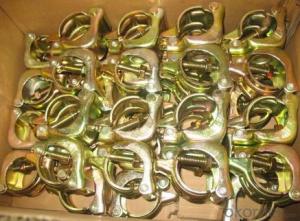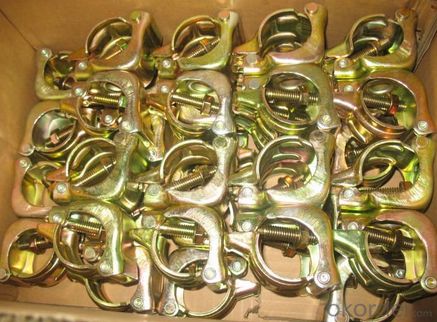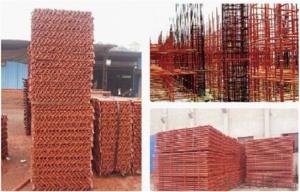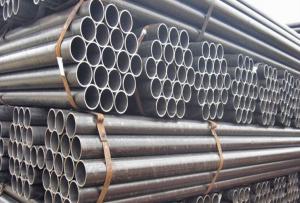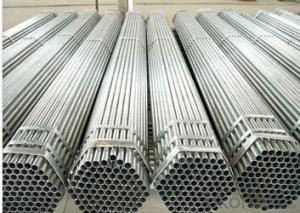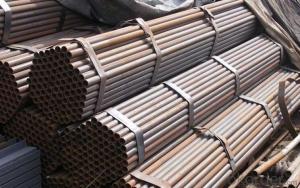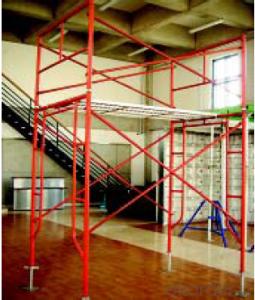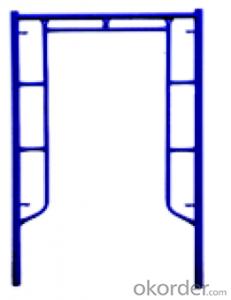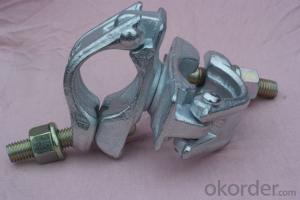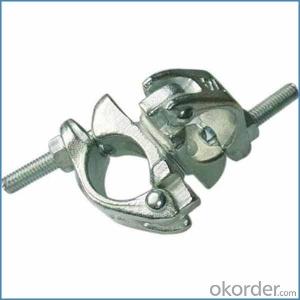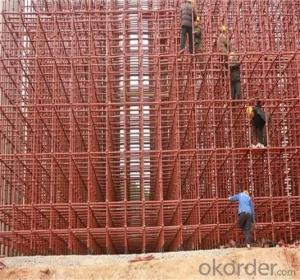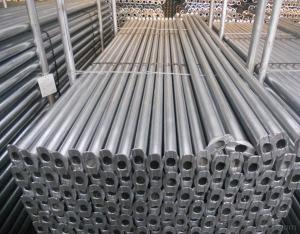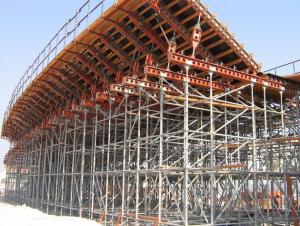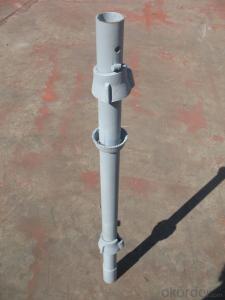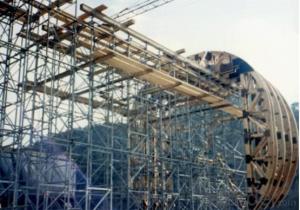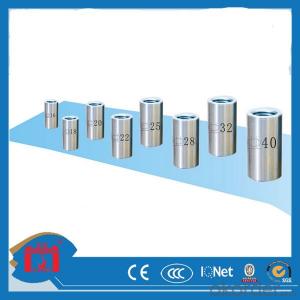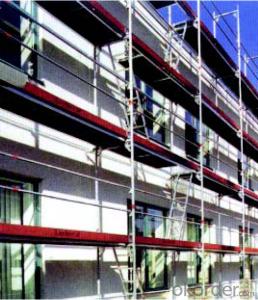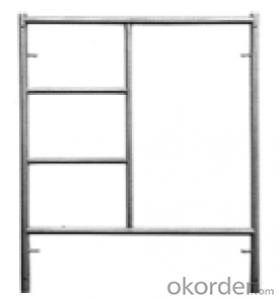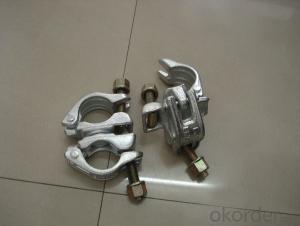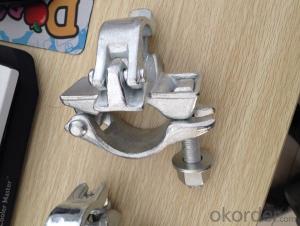Customized cuplock scaffolding system bottom cup made in Rizhao,China
- Loading Port:
- Tianjin
- Payment Terms:
- TT OR LC
- Min Order Qty:
- 10000 pc
- Supply Capability:
- 10000 pc/month
OKorder Service Pledge
OKorder Financial Service
You Might Also Like
Quick Details
| Model Number: | SD-2008 | ||||
| Material: | Q235 | Color: | self color or as required | type: | scaffolding bottom cup for cuplock system |
| Surface: | Black,zinc plate | standard: | bs1139/en74 | Weight: | 0.22kg or as required |
| application: | bottom cup for cuplock scaffolding system |
Packaging & Delivery
| Packaging Detail: | scaffold accessories:pallets or as required |
| Delivery Detail: | scaffold accessories:15-20 days after confirmation |
Specifications
cuplock system bottom cup
1 Material:cast steel/45#forged
2 surface:black
3 weight:0.45kg
Cuplock bottom cup
cuplock system bottom cup
1 Material:cast steel/45#forged
2 surface:black
3 weight:0.45kg
We are scaffolding manufacturer in China . We have more than 10 years experience in Scaffolding production and have a good reputation in this field. More than 90% of our products are export to Western Europe, Northern Europe, North America, South America, Australia. Hope we can establish longtime cooperation.
Pls have a check of our scaffolding accessories products below: (We can also provide other types as u required)
- Q: Can steel tube couplers be used in scaffolding projects with limited on-site storage space?
- Steel tube couplers are suitable for scaffolding projects with limited on-site storage space. Due to their small and compact design, they are perfect for projects where space is at a premium. These couplers can be conveniently stored in a confined area without occupying much room. Moreover, they possess excellent durability and can endure harsh weather conditions, guaranteeing their optimal state even during storage. Thus, employing steel tube couplers in scaffolding projects with restricted on-site storage space is a pragmatic and effective resolution.
- Q: Can steel tube couplers be used in scaffolding projects with different building materials?
- Yes, steel tube couplers can be used in scaffolding projects with different building materials. Steel tube couplers are versatile and can be used with various materials such as wood, concrete, or brick. They provide a strong and secure connection, making them suitable for scaffolding projects involving different building materials.
- Q: What is the typical weight of steel tube couplers used in scaffolding?
- The weight of steel tube couplers utilized in scaffolding may differ based on the particular type and size of the coupler. On average, these couplers generally range from 0.5 to 2 pounds (0.23 to 0.91 kilograms). It is worth mentioning that the weight can also be affected by factors like the thickness of the material and the overall design of the coupler.
- Q: Are steel tube couplers compatible with different scaffolding materials, such as wood or bamboo?
- Steel tube couplers are primarily intended for use with steel scaffolding materials, as they are engineered to securely connect steel tubes and provide stability and strength to the scaffolding structure. However, it is important to note that these couplers may not be fully compatible with alternative scaffolding materials like wood or bamboo. This is because wood and bamboo have distinct properties and dimensions compared to steel, and thus require specific types of connectors or fasteners to ensure proper attachment and structural integrity. Using steel tube couplers with wood or bamboo scaffolding materials may not offer the necessary strength and stability required for a safe and reliable scaffolding system. Therefore, it is crucial to select connectors or fasteners that are specifically designed for wood or bamboo scaffolding, in order to guarantee a secure and sturdy structure. To summarize, although steel tube couplers are designed to be compatible with steel scaffolding materials, they may not be suitable for use with different materials such as wood or bamboo. It is essential to consult with experts or refer to manufacturer guidelines to ensure proper and safe compatibility between the scaffolding materials and connectors.
- Q: Do steel tube couplers require any specific certifications or standards for use in scaffolding?
- Yes, steel tube couplers used in scaffolding generally require specific certifications and must meet certain standards to ensure their safety and performance. Some common certifications and standards for steel tube couplers used in scaffolding include the BS EN 74 standard in Europe and the ANSI/SSFI SC100-5/05 standard in the United States. These certifications and standards ensure that the couplers are designed, tested, and manufactured to meet specific requirements for load-bearing capacity, durability, and safety. It is important to check for these certifications and standards before using steel tube couplers in scaffolding to ensure compliance with regulatory and industry requirements.
- Q: Can steel tube couplers be used in scaffolding that needs to support cantilevered or suspended platforms?
- Yes, steel tube couplers can be used in scaffolding that needs to support cantilevered or suspended platforms. Steel tube couplers are designed to provide secure and strong connections between scaffold tubes, ensuring stability and support for various applications, including cantilevered or suspended platforms.
- Q: Can steel tube couplers be used in scaffolding structures that need to support workers at different heights?
- Yes, steel tube couplers can be used in scaffolding structures that need to support workers at different heights. Steel tube couplers are commonly used in scaffolding systems to connect steel tubes together, providing a secure and stable structure. By using different lengths of steel tubes and couplers, scaffolding structures can be easily adjusted to different heights, ensuring the safety and stability of workers working at various levels.
- Q: A 115 kg scaffold is 6 m long. It is hanging with two wires, one from each end. A 540 kg box sits 1.8 m from the left end. What is the tension in the right hand side wire?(g = 9.8 m/s2)
- this is a torque question with two unknowns i.e. the two tension forces in the wires. to find the tension in the right one, let the pivot point be at the connection of the wire (the left one) and the scaffold. Then the following calculation: let T=tension in right wire r=the lever arm length the angle is 90 so no need to worry about the angle as sin90=1 sum of the anticlockwise moments=sum of the clockwise moments 6T=540x9.8x1.8+3x115x9.8 T=2151.1N (upwards) draw a diagram it helps you to see the question more clearly
- Q: Are there any specific maintenance requirements for steel tube couplers in scaffolding?
- Yes, there are specific maintenance requirements for steel tube couplers in scaffolding. These couplers should be regularly inspected for any signs of damage, such as cracks or corrosion. They should also be cleaned and lubricated to ensure smooth functioning and prevent rusting. Additionally, it is important to follow the manufacturer's guidelines for load capacities and proper usage to maintain the safety and integrity of the scaffolding structure.
- Q: What are the different locking mechanisms available for steel tube couplers?
- There are several different locking mechanisms available for steel tube couplers, including bolted couplers, wedge couplers, and friction grip couplers. Bolted couplers use bolts to secure the coupler to the tube, providing a strong and reliable connection. Wedge couplers use a tapered wedge to grip the tube tightly, ensuring a secure fit. Friction grip couplers utilize friction between the coupler and the tube to create a strong connection. Each locking mechanism has its own advantages and is suitable for different applications and requirements.
Send your message to us
Customized cuplock scaffolding system bottom cup made in Rizhao,China
- Loading Port:
- Tianjin
- Payment Terms:
- TT OR LC
- Min Order Qty:
- 10000 pc
- Supply Capability:
- 10000 pc/month
OKorder Service Pledge
OKorder Financial Service
Similar products
Hot products
Hot Searches
Related keywords
